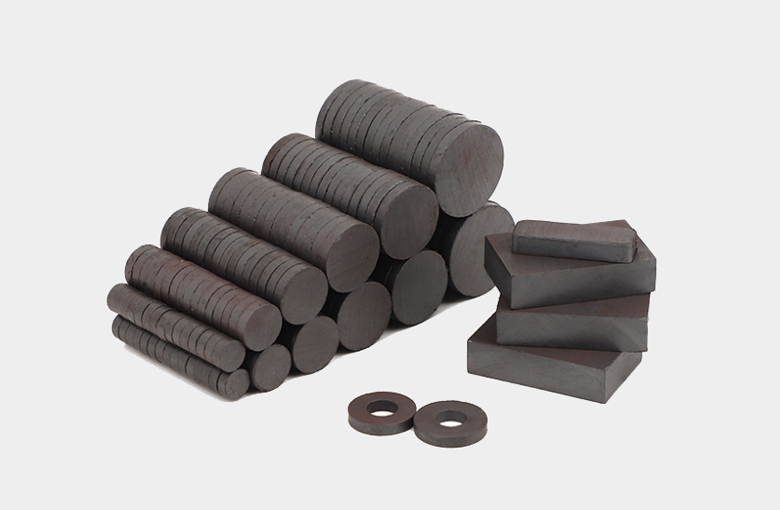Ferrite permanent magnet material in all magnet types, cost performance is the highest, the dosage is also the largest, it can be divided into the isotropic ferrite and anisotropic strontium ferrite because of the different direction of magnetization, the following is a detailed introduction to the difference between the two.
What are isotropic ferrites?
Isotropic ferrite permanent magnet refers to forming when there is no coil to do magnetization orientation, the direction of magnetization is indefinite. That is to say, when your product is sintered and magnetized, you can magnetize in all directions, tilt, and the direction of magnetization is oblique.
What is an anisotropic ferrite magnet?
Anisotropic ferrite magnet refers to the forming press is the coil magnetization orientation, that is to say, the direction of magnetization of the opposite sex products is fixed after forming, when you product sintering after magnetization, you again how to tilt each Angle magnetization, but his direction of magnetization is the same.
Thousands of ceramic ferrite magnets specifications waiting for you to consult

The difference between isotropic and isotropic ferrites
Differences in magnetic properties; The biggest advantage of various anisotropic ferrite magnets is that their performance is much better than that of various isotropic ferrite products, and their magnetism is stronger. From the production process, it can be seen that heterosexual products require more production processes to ensure maximum consistency in magnetization orientation during molding.
Difference in surface magnetic strength: The surface magnetic field of isotropic ferrite is usually less than 800 Gauss, usually 506 Gauss, while the magnetic field of anisotropic ferrite is more than 900 Gauss, which is more common around 1100 Gauss.
Differences in performance grade grades: Y8T and Y10T grades indicate isotropy, while Y25, Y30, and Y30BH grades indicate anisotropy. Usually, most of the isotropic ferrites are molded, that is, circular plates, and there are also blocks. The most obvious feature is that the circular plates have R angles around them, which are relatively smooth. Various types of anisotropic ferrite are usually cut, referring to the block type, commonly used in gate magnets, reed tubes, and mechanical equipment.
This article is shared by Xiao Fu original, the Chinese courage magnet manufacturer, the company's long-term supply of various shapes of sintered and injection permanent magnet ferrite, many specifications have spot inventory, welcome to consult the price, sample.
More knowledge of ferrite magnets;
 China Neodymium And Ferrite Magnets Manufacturer & Supplier
China Neodymium And Ferrite Magnets Manufacturer & Supplier 


